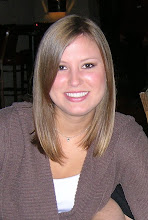Refugee Speakers
Dr. Montgomery spoke to us about refugees and their populations. A refugee is not the same as an immigrant. An immigrant chooses to leave their country for a different life. While a refugee is a person forced to leave their homeland and is unable to return. Most often refugees leave with only the clothes on their back. Most refugees have been through numerous traumatic events such as, conflict and terror, chaos and camps, traumatic life events, unanticipated moves, left family behind, disruptions to daily routine, and great loss. Refugees gather in camps where their shelters can be made from scraps of fabric, boxes, sticks, or other materials depending on the geographic area. Sometimes generations of refugees can exist within an refugee camp. In the United States, the majority of the refugees are from Vietnam. From the 70,000 refugees who entered the US in 2006, only 50,000 were accepted. Refugees face many challenges when they come to the United States. Some of the challenges that they face are mental health issues, such as depression, limited formal education, lack of documentation, and difficulty with parental involvement and education.
Programs are set up for refugee students. Programs like medical and dental services, guidance and counseling, clothing and food, transportation, and specialized instruction are beneficial to those students. Teachers should provide socialization and accommodating activities for the newly-arrived students. Time and discussion of the norms in the classroom help students adjust to their new environments. Teachers can determine a 'welcome' process for your school. Four keys to success with refugee students are engaging students in thematic-based curriculum, draw on students backgrounds, have collaborative activities, and create confidant learners who value themselves and school. The most important thing a teacher can do is understand.
Philip did a great job describing his experiences during his time in the Peace Corps in South Africa. His presentation gave me a better understanding of the roles of the Peace Corps in other countries and the perpective of an outsider coming into an unknown culture. I found his stories very interesting and motivating for myself to experience more cultures in the world. I would love to experience and learn about others first hand, just as he did.
Exceptionality
Disproportionate placement in special education can be due to poverty, lead poisoning, over referrals, racial bias, assessment issues, unexplained issues, and lack of options. Exceptional students vary from learning disabled to gifted students. There are numerous options for those children in the educational setting. Students should be given the opportunities to grow, normalization, and inclusion if deemed necessary. Utilizing Garner's Multiple Intelligence theory in the classroom can help a teacher reach all students with exceptionalities in the classroom.





No comments:
Post a Comment